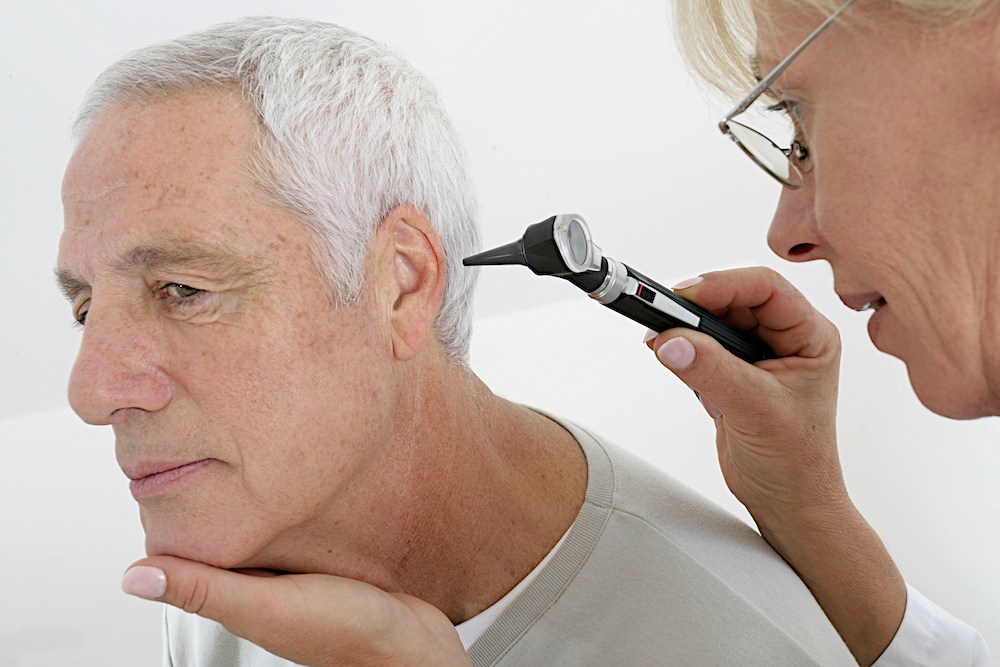How to Create a Quiet Space for Optimal Hearing Health
Creating a quiet space in your home or workplace might not seem urgent
May your days be filled with sound—hear the laughter, the music, and the whispers of spring all around you! – Learn more

By: admin | February 18, 2025
Technology moves quickly, and hearing aid design is no exception. Over-the-counter (OTC) hearing aids have introduced new options for people seeking hearing support, bringing additional choices alongside traditional prescription devices.
Your hearing aids are about more than just amplifying sound. They’re complex devices designed to help you understand conversations, enjoy music and interact with your environment in clearer, more precise ways. Recent innovations have focused on making these devices smarter, more comfortable and more responsive to your specific hearing needs.
Hearing aid technology continues to improve, with designers and engineers constantly working to create devices that fit seamlessly into your daily life. OTC devices offer one pathway, but they work alongside the sophisticated prescription hearing aids that audiologists recommend for more complex hearing challenges.
Whether you’re in a quiet room or a busy restaurant, modern hearing aids are built to help you hear what matters most – the conversations and sounds that keep you connected to the people and experiences around you.
OTC hearing aids, available without a prescription, offer an alternative for those experiencing self-perceived mild hearing loss. For decades, hearing aids were only available through licensed professionals, requiring detailed evaluations, fittings and programming to ensure they matched the user’s specific needs. While this model provided highly personalized care, it also meant that access to hearing aids was limited for many individuals. Recognizing the need for greater accessibility, researchers and policymakers began advocating for alternative options that could help more people address their hearing loss.
A significant milestone came in 2017 when the Over-the-Counter Hearing Aid Act was signed into law as part of the FDA Reauthorization Act. This legislation directed the FDA to create a category of hearing aids that could be purchased without a prescription. The intention was to provide more people with access to hearing devices for mild to moderate hearing loss. The FDA finalized its rules in August 2022, and by October, OTC hearing aids became available for purchase in stores and online. These devices marked a shift in hearing care, offering a new pathway for individuals to take the first step toward improving their hearing.
Unlike prescription hearing aids, which involve a professional assessment and are tailored to each individual’s hearing profile, OTC hearing aids are designed to be self-fit and user-adjustable. They work well for people with mild to moderate hearing loss who can identify their needs without a diagnostic evaluation. However, the simplicity of OTC devices comes with trade-offs. Without the refinement and customization offered by a professional fitting, users may find that OTC hearing aids lack the precision and advanced features of prescription devices. Additionally, individuals with more complex hearing needs may require the expertise of an audiologist to address their unique challenges.
Innovations like digital sound processing and noise reduction capabilities have significantly improved the performance of these devices. They now offer a clearer, more natural sound experience than ever before.
Some of the tech advancements you’ll find in modern OTC hearing aids include digital amplification for enhanced sound clarity, directional microphones to focus on speech while reducing background noise, feedback cancellation to prevent annoying whistling sounds and wireless connectivity for easy pairing with smartphones or other Bluetooth-enabled devices.
While technology has made strides in enhancing OTC hearing aids’ functionality, there are still some obvious gaps in performance regarding customization and personalization. This highlights the importance of having your audiologist weigh-in on the decision-making process when selecting hearing aids.
The digital age has brought about many changes, and OTC hearing aids are no exception. One of the most significant advancements is the introduction of connectivity features. These revolutionary additions have transformed how you interact with your hearing aids, making them more than just a tool for better hearing.
Bluetooth technology in OTC hearing aids allows you to connect your devices directly to your smartphone or other Bluetooth-enabled devices. This means you can stream phone calls, music and even television audio straight to your hearing aids – enhancing your overall listening experience. It’s a leap forward in convenience and functionality that has made these devices more user-friendly and versatile.
Sound quality in modern OTC hearing aids has improved considerably, offering a more refined listening experience. These devices now utilize advanced digital signal processing (DSP) technology, which enhances sound clarity by refining how sounds are amplified and reproduced. DSP allows for better frequency adjustments, helping users hear speech more clearly and reducing distortion. As a result, conversations become easier to follow, especially in quieter environments.
In addition, noise reduction features have been improved, making it easier to distinguish speech from background sounds. These advancements help minimize distractions, allowing users to focus on important sounds without being overwhelmed by surrounding noise. Feedback cancellation systems have also been integrated, ensuring a clearer sound without annoying whistling or distortion. While these OTC hearing aids offer enhanced sound quality, they are still generally less sophisticated than prescription devices, which may offer more personalized adjustments and features tailored to individual needs.
Even if you’re considering over-the-counter hearing aids, it’s still important to consult an audiologist for testing and advice. While OTC devices are an accessible, they may not be the best solution for everyone. An audiologist can conduct a thorough hearing test to assess the degree and type of hearing loss you may have, ensuring that any hearing aid you choose is suited to your specific needs. Without professional testing, it’s difficult to determine the full extent of hearing loss, and you might miss out on features or settings that could make a significant difference in your hearing experience.
An audiologist can also provide personalized recommendations based on your lifestyle and listening environment. For example, if you spend time in noisy places or need more specialized adjustments, a hearing aid fitted by a professional might offer a better experience than an OTC model. Audiologists can also guide you on how to adjust settings for different situations, ensuring you get the most out of your device. While OTC hearing aids may be easier to use and more affordable, they often come with limited customization options compared to prescription devices, which can be tailored to your hearing preferences.
An audiologist can help with the ongoing care and maintenance of your hearing aids. Even if you initially opt for an OTC device, having an expert available to offer advice on cleaning, maintenance and troubleshooting can prolong the life of your device and improve its effectiveness. Regular check-ins with an audiologist ensure that your hearing aids remain well-suited to your needs as your hearing may change over time.
Selecting a hearing aid is an important decision that requires careful consideration of several factors to ensure that the device suits the patient’s needs and lifestyle. As an audiologist, one of the first steps in this process is to assess the type and degree of hearing loss the patient has. Hearing loss varies widely, with some individuals having difficulty hearing high-frequency sounds and others experiencing challenges with low frequencies. Understanding these patterns helps determine which type of hearing aid – whether behind-the-ear (BTE), in-the-ear (ITE) or in-the-canal (ITC) – will be most effective. Each style offers different amplification levels and can provide various benefits based on the patient’s hearing loss profile.
Another key consideration is the features and technology available in the hearing aids. Many modern devices offer advanced functionalities like directional microphones, noise reduction and feedback cancellation, which help improve the clarity of speech, especially in noisy environments. For example, patients who frequently find themselves in social settings or restaurants may benefit from hearing aids with advanced noise reduction, while those who spend more time in quiet spaces might prioritize sound clarity. Wireless capabilities, like streaming from smartphones, can also be appealing to many patients, enhancing their overall listening experience. However, it is important to weigh the benefits of these technologies against the patient’s needs and budget.
When considering over-the-counter (OTC) versus prescription hearing aids, an audiologist should be there to help guide you toward the most appropriate choice. While OTC hearing aids are more accessible and affordable, they come with limitations in customization and fitting. For patients with more complex or significant hearing loss, prescription hearing aids are often a better option. These devices are tailored to the individual’s specific hearing needs and provide a more seamless integration into daily life.
The audiologist can perform thorough hearing tests and fine-tune prescription devices to ensure they provide the best possible amplification and comfort. OTC hearing aids may suit individuals with mild hearing loss, but for many, the precision and personalization of prescription models are worth the investment.
Comfort and ease of use are always important factors to consider, as hearing aids are worn for extended periods. As an audiologist, it’s essential to ensure that the hearing aid fits well and is comfortable in the ear, especially since many patients will wear them daily. Additionally, the device should be intuitive, with simple controls for adjusting settings as needed. Some patients may prefer automatic adjustments, while others may want manual control.
Lastly, when helping patients choose the right hearing aid, it’s essential to consider their lifestyle, budget and maintenance preferences. Rechargeable hearing aids may be more convenient for some patients, while others might prefer disposable batteries. Depending on how much time they’re willing to devote to maintenance and cleaning, the audiologist can recommend a device that suits their routine. Regardless of whether they opt for an OTC or prescription model, a hearing aid should not only improve hearing but also integrate smoothly into the patient’s life, offering long-term comfort and functionality.
As hearing aid technology continues to evolve, the range of options available ensures that there is a solution for nearly every hearing need. OTC devices have introduced a more accessible option for those with milder hearing loss, offering convenience and simplicity. However, for individuals with more specific or complex needs, prescription devices remain the most effective choice. These devices are tailored to fit individual hearing profiles and provide a higher degree of customization, helping to address challenges like background noise and speech clarity.
Ultimately, the right hearing aid is one that fits seamlessly into your life, providing you with the clarity and confidence to enjoy every moment. If you’re considering an OTC hearing aid, or if you have any concerns about your auditory health, we encourage you to reach out to Advanced Hearing Services in Fort Collins, CO by calling (970) 449-0592.
Tags: benefits of hearing aids, hearing aid styles, over-the-counter hearing aids

Creating a quiet space in your home or workplace might not seem urgent
By: admin | October 20, 2025

Most people think hearing loss just affects how well you can follow a
By: admin | July 29, 2025

Stress and hearing health share a two-way relationship that many of us
By: admin | June 20, 2025
